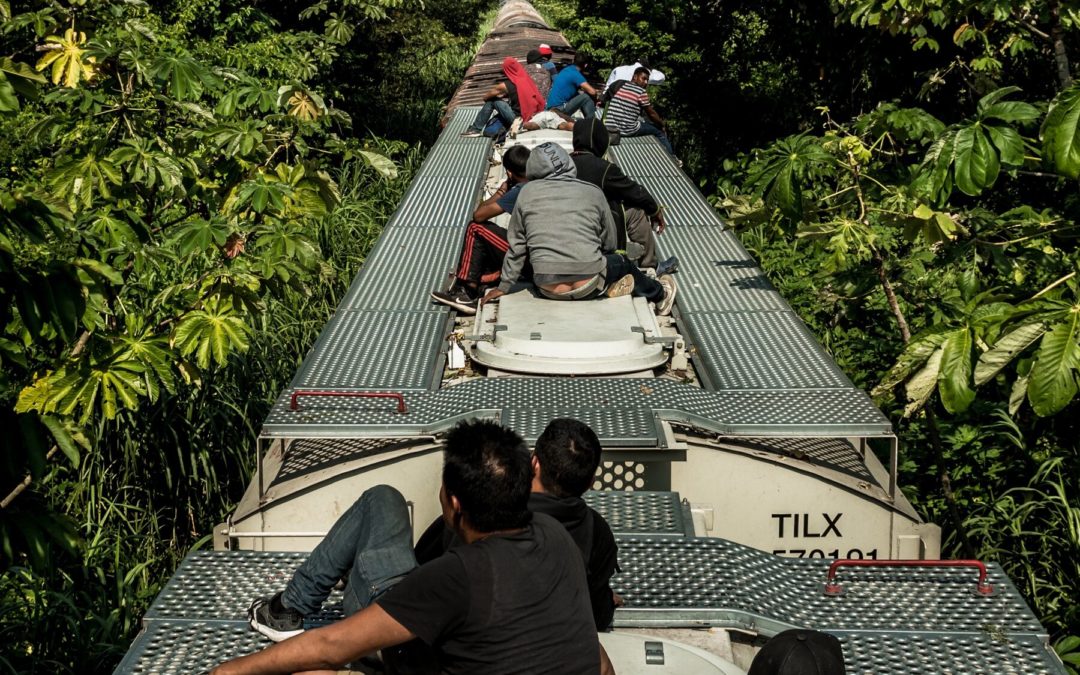SOURCE: New York Times
DATE: July 23, 2020
SNIP: For most of human history, people have lived within a surprisingly narrow range of temperatures, in the places where the climate supported abundant food production. But as the planet warms, that band is suddenly shifting north. According to a pathbreaking recent study in the journal Proceedings of the National Academy of Sciences, the planet could see a greater temperature increase in the next 50 years than it did in the last 6,000 years combined. By 2070, the kind of extremely hot zones, like in the Sahara, that now cover less than 1 percent of the earth’s land surface could cover nearly a fifth of the land, potentially placing one of every three people alive outside the climate niche where humans have thrived for thousands of years. Many will dig in, suffering through heat, hunger and political chaos, but others will be forced to move on. A 2017 study in Science Advances found that by 2100, temperatures could rise to the point that just going outside for a few hours in some places, including parts of India and Eastern China, “will result in death even for the fittest of humans.”
People are already beginning to flee. In Southeast Asia, where increasingly unpredictable monsoon rainfall and drought have made farming more difficult, the World Bank points to more than eight million people who have moved toward the Middle East, Europe and North America. In the African Sahel, millions of rural people have been streaming toward the coasts and the cities amid drought and widespread crop failures. Should the flight away from hot climates reach the scale that current research suggests is likely, it will amount to a vast remapping of the world’s populations.
The best outcome requires not only good will and the careful management of turbulent political forces; without preparation and planning, the sweeping scale of change could prove wildly destabilizing. The United Nations and others warn that in the worst case, the governments of the nations most affected by climate change could topple as whole regions devolve into war.
The stark policy choices are already becoming apparent. As refugees stream out of the Middle East and North Africa into Europe and from Central America into the United States, an anti-immigrant backlash has propelled nationalist governments into power around the world. The alternative, driven by a better understanding of how and when people will move, is governments that are actively preparing, both materially and politically, for the greater changes to come.
In recent months, the coronavirus pandemic has offered a test run on whether humanity has the capacity to avert a predictable — and predicted — catastrophe. Some countries have fared better. But the United States has failed. The climate crisis will test the developed world again, on a larger scale, with higher stakes. The only way to mitigate the most destabilizing aspects of mass migration is to prepare for it, and preparation demands a sharper imagining of where people are likely to go, and when.
As they have looked more closely, migration researchers have found climate’s subtle fingerprints almost everywhere. Drought helped push many Syrians into cities before the war, worsening tensions and leading to rising discontent; crop losses led to unemployment that stoked Arab Spring uprisings in Egypt and Libya; Brexit, even, was arguably a ripple effect of the influx of migrants brought to Europe by the wars that followed. And all those effects were bound up with the movement of just two million people. As the mechanisms of climate migration have come into sharper focus — food scarcity, water scarcity and heat — the latent potential for large-scale movement comes to seem astronomically larger.
If it is not drought and crop failures that force large numbers of people to flee, it will be the rising seas. We are now learning that climate scientists have been underestimating the future displacement from rising tides by a factor of three, with the likely toll being some 150 million globally.
Through all the research, rough predictions have emerged about the scale of total global climate migration — they range from 50 million to 300 million people displaced — but the global data is limited, and uncertainty remained about how to apply patterns of behavior to specific people in specific places. Now, though, new research on both fronts has created an opportunity to improve the models tremendously. A few years ago, climate geographers from Columbia University and the City University of New York began working with the World Bank to build a next-generation tool to establish plausible migration scenarios for the future.
The bank’s work targeted climate hot spots in sub-Saharan Africa, South Asia and Latin America, focusing not on the emergency displacement of people from natural disasters but on their premeditated responses to what researchers call “slow-onset” shifts in the environment. They determined that as climate change progressed in just these three regions alone, as many as 143 million people would be displaced within their own borders, moving mostly from rural areas to nearby towns and cities.
For all the ways in which human migration is hard to predict, one trend is clear: Around the world, as people run short of food and abandon farms, they gravitate toward cities, which quickly grow overcrowded. It’s in these cities, where waves of new people stretch infrastructure, resources and services to their limits, that migration researchers warn that the most severe strains on society will unfold. Food has to be imported — stretching reliance on already-struggling farms and increasing its cost. People will congregate in slums, with little water or electricity, where they are more vulnerable to flooding or other disasters. The slums fuel extremism and chaos.
The window for action is closing. The world can now expect that with every degree of temperature increase, roughly a billion people will be pushed outside the zone in which humans have lived for thousands of years.

